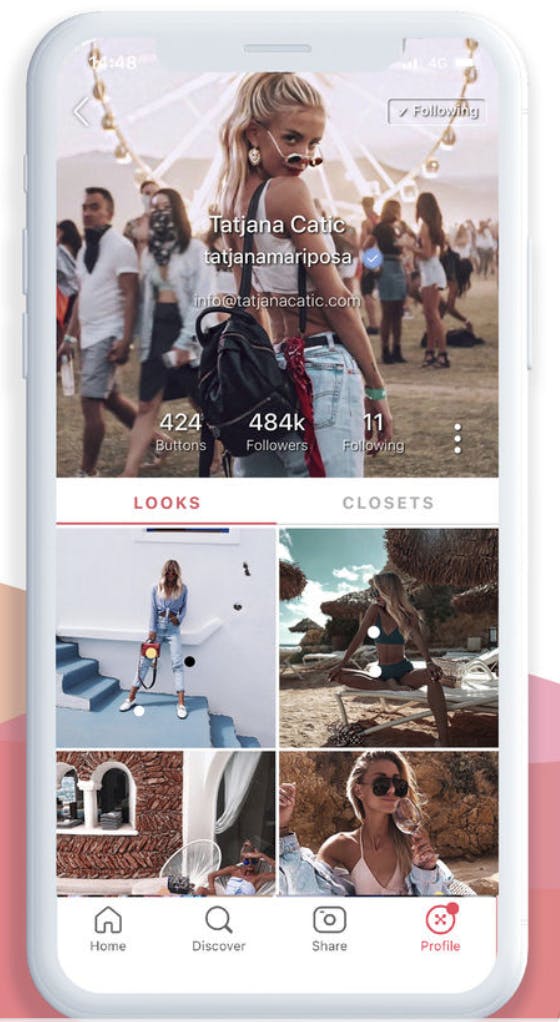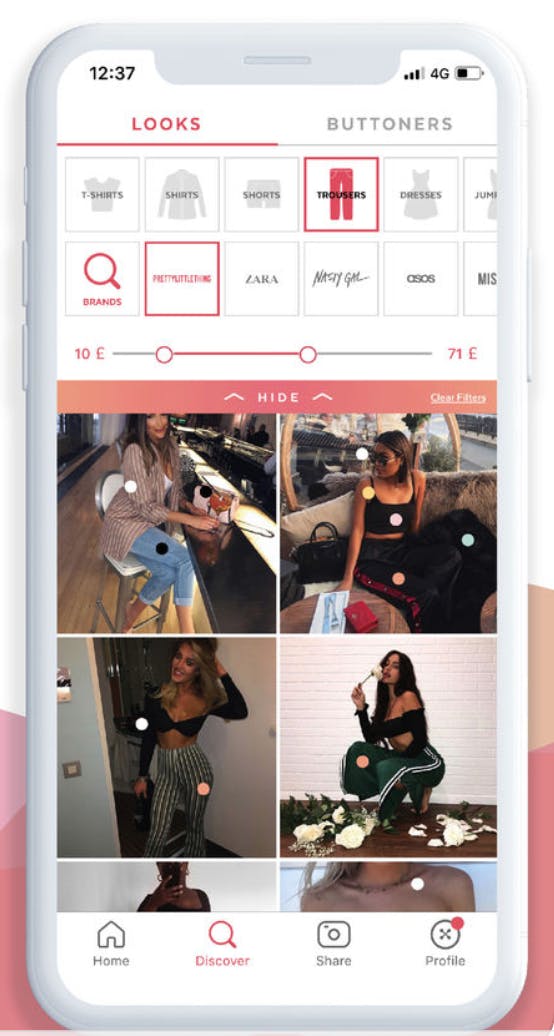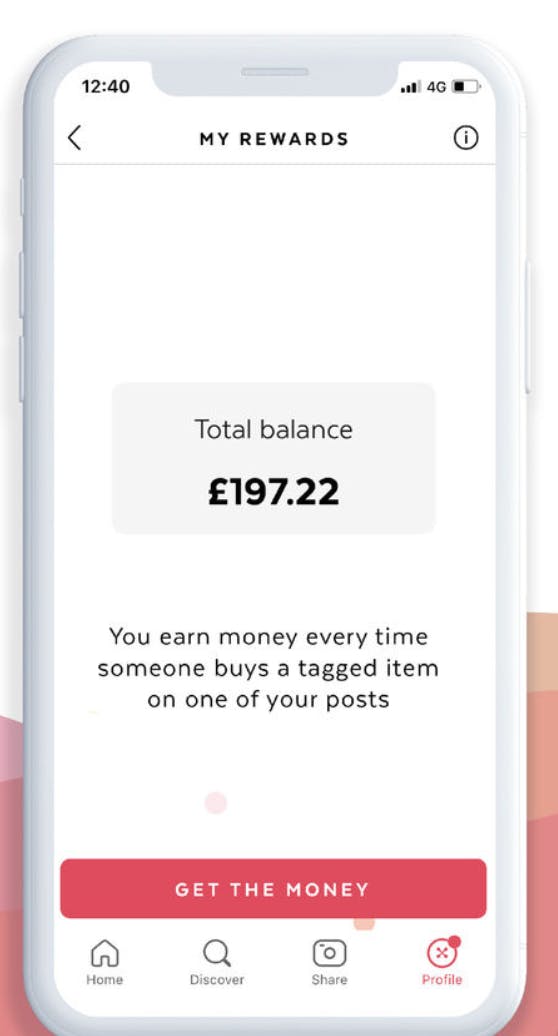Last year, Pinterest added Product Pins to show up-to-date pricing information (as well as direct links to product pages on retail websites). Meanwhile, Instagram extended its shopping capabilities, allowing brands to make posts shoppable on both Stories and the Explore page.
While interest and engagement in commerce has certainly increased here, these platforms are by no means shopping ‘destinations’. Curation and inspiration still remain a core reason why users browse the apps, with plenty of people then going on to buy elsewhere (if indeed they are even looking at products in the first place).
Interestingly, both Instagram and Pinterest may face competition from another digital platform – 21 Buttons – which is solely built with social commerce in mind.
Here’s more on 21 Buttons, what it offers consumers, and what impact it could have on social commerce as a whole.
For subscribers
Download Econsultancy’s Guide to Social Media Platforms
Social commerce at its core
Founded in 2016, 21 Buttons is a social network and fashion marketplace that allows influencers to share shoppable photos of their outfits. Items are tagged and directly linked to ecommerce stores, with affiliate partnerships allowing the influencer to take a commission of any sale made.
While 21 Buttons features many high-profile influencers – including the likes of GraceFitUK and Sarah Ashcroft – the business model also means that anyone has the ability to become an influencer. All users that sign up have the ability to upload and share outfit photos, creating a pool of quality user-generated content alongside more premium influencer posts.

A seamless shopping experience
One of 21 Buttons’ unique selling points is that it offers a much more direct and seamless experience for both shoppers and influencers alike. Unlike Instagram, where only retailers and brands have the power to make their posts shoppable, 21 Buttons gives this ability to everyone on its platform.
To tag an item, the user can simply select a retailer or ecommerce site, and then search the web to find it for sale online. Alongside this, items from various brands can be tagged in a single image, making the shopping experience far more seamless from a user perspective.
In contrast, images on Instagram can only include multiple items from one brand (posted either by the retailer themselves, as an ad, or an influencer sponsored post). However, 21 Buttons allows users to shop an entire outfit, including links from various different retailers in a single photo.
This means shopping is much quicker, easier, and more realistic, allowing consumers to cherry pick from multiple brands (much like they would on bigger ecommerce and marketplace sites).
Ecommerce-style search
Another feature that gives 21 Buttons an edge is its search and filter functionality, which also creates the kind of user experience found on ecommerce sites like ASOS.
If the user is looking for something specific, they can search by retail brand, size, colour, and gender to find the relevant items. This automatically closes the gap between inspiration and conversion, channelling users’ personal tastes and driving them down the path to purchase.
Closet curation
However, while 21 Buttons is built around its shopping functionality, that doesn’t mean it doesn’t have the same benefits as Instagram and Pinterest in terms of inspiration.
The app can be used solely for curation purposes, with the ‘closet’ feature allowing users to create collections based on different styles or occasions. Similarly, the ‘Discover’ section shows users looks they might like based on their previous browsing or buying behaviour.
Again, this does feel like 21 Buttons is borrowing from the best of its competitor platforms, which combined with its own USP, means there is a lot to draw in users.

The influencer incentive
On this note, another element which could work in 21 Buttons’ favour is the growing interest in influencer marketing. Or more specifically, an interest in pursuing it as a career or monetary endeavour.
It’s not entirely clear how the algorithm on 21 Buttons works in terms of which influencers it promotes or what posts become the most visible. However, it does appear that interacting with others, frequent uploads, and professional photography can all help. So, there is nothing major from stopping new or up-and-coming influencers from getting their posts seen (as well as the chance to earn money from affiliate links).
In this sense, 21 Buttons could draw users away from Instagram who are solely interested in pursuing fashion or the chance to be remunerated for their posts. After all, the main way to earn money on Instagram is through larger sponsorship deals, which is not such an achievable notion for the average wannabe influencer – especially considering the saturated pool of influencers already on the platform.

What are the negatives?
21 Buttons is certainly a good premise, but it is of course far from perfect. There are a few issues that could prevent user acquisition, which could in turn affect the platform’s ability to scale or sell.
First, the fact that there is no verification process means that transparency is an issue. Theoretically, anyone can sign up and post any image. So, there’s seemingly nothing stopping someone from stealing images from magazines or other editorial sites, just to be able to include an affiliate link. It’s likely that 21 Buttons is pretty hot on this kind of behaviour, but it is also presumably a difficult one to continuously monitor and control. Brand involvement is also likely to be affected by this, especially as anyone can essentially promote or become a ‘face’ for a brand, without direct approval or involvement.
From user reviews, another common issue appears to be that the app promotes and prioritises a narrow selection of fashion styles (and body types). This is something that, again, the platform is likely trying to address. However, compared to the body positive communities on Instagram, and the wide variety of fashion found on the app, it’s something that could minimise 21 Buttons’ audience demographic.
In this context, it is unlikely that 21 Buttons will overtake or perhaps even rival Instagram and Pinterest, especially if these platforms continue to expand and improve their own shoppable features. As an alternative app, however, 21 Buttons is certainly valuable for people with the desire to dress like their favourite influencers (and indeed those wanting to follow their path).

Thanks for sharing this, Nikki! I had not very hear of 21 Buttons. I’m going to look into this for some of my E-comm clients!